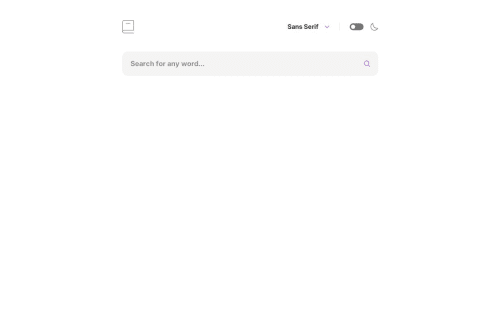Dictionary App with React, Tailwind, Context & Dark Mode

Solution retrospective
I'm most proud of how modular and maintainable the final project turned out. I used React Context API to manage global state (word search, theme, and font selection), and ensured that user preferences persist across sessions using localStorage. Features like dark mode and font switching were fully integrated into the design system with Tailwind CSS.
If I were to do it again, I’d consider using a more scalable state management tool like Zustand or Redux Toolkit for better debugging and dev experience, especially if the app grows in complexity.
What challenges did you encounter, and how did you overcome them?One of the biggest challenges was integrating multiple UI features (like dark mode and font switching) in a clean and accessible way while keeping the code modular. Managing the global state without prop-drilling was solved by introducing Context, which made the components more reusable and isolated.
Another challenge was persisting UI preferences like theme and font. I solved this using localStorage combined with useEffect() to initialize the UI state when the app loads.
- I'd love feedback on my use of the Context API — is there a cleaner or more efficient way to organize global state for UI preferences?
- How can I optimize performance and avoid unnecessary re-renders across context consumers?
- Any suggestions on improving accessibility for the font dropdown and dark mode toggle?
Please log in to post a comment
Log in with GitHubCommunity feedback
No feedback yet. Be the first to give feedback on Rohan T George's solution.
Join our Discord community
Join thousands of Frontend Mentor community members taking the challenges, sharing resources, helping each other, and chatting about all things front-end!
Join our Discord